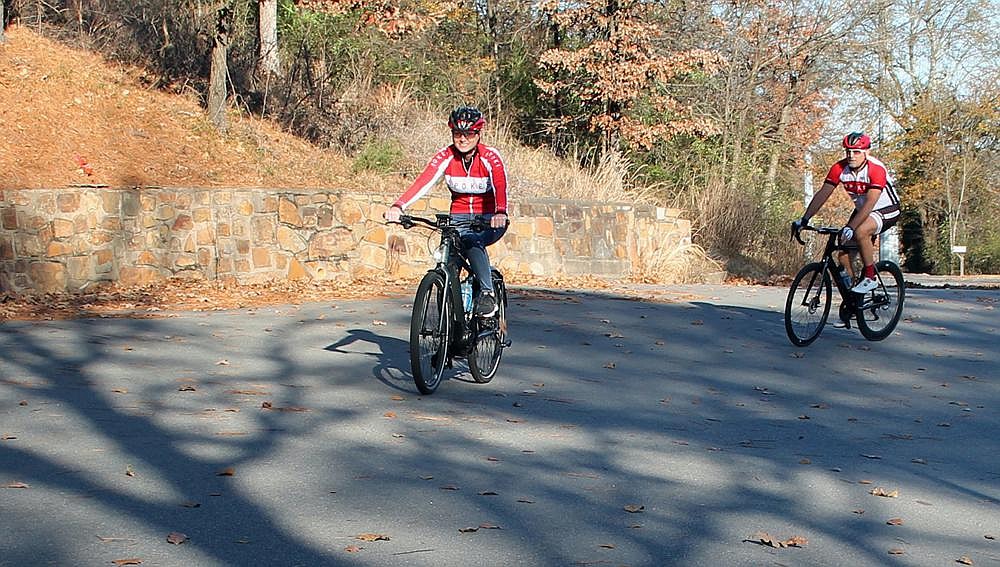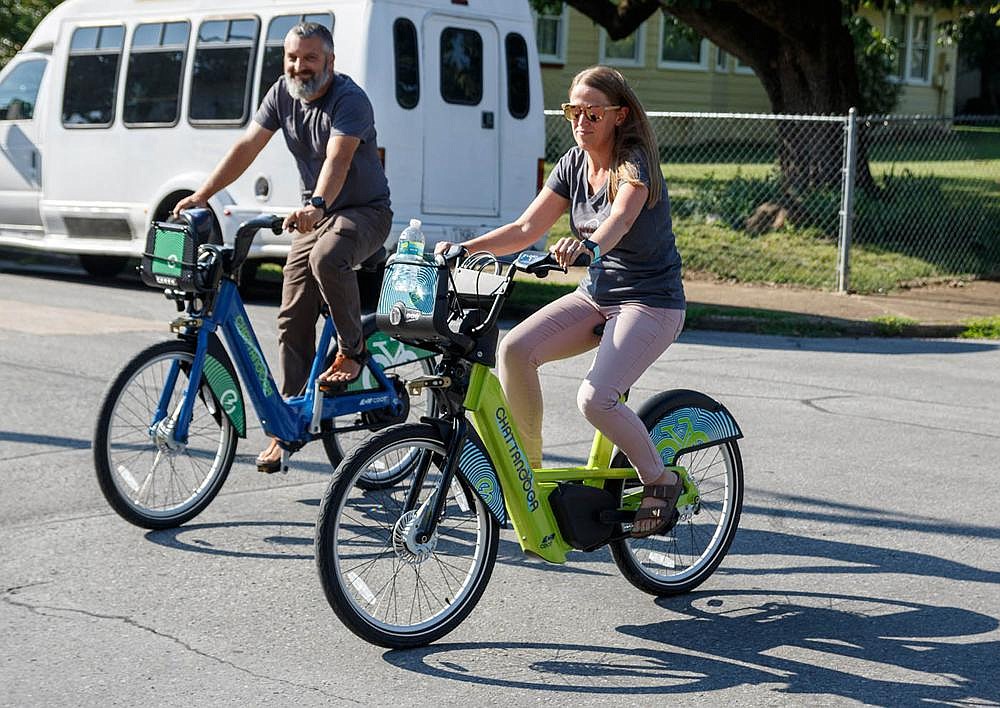GRETCHEN REYNOLDS: Ought to e-bikes be all the trend?
Is driving an e-bike good train? Is driving an e-bike secure?
With curiosity in and gross sales of pedal-
assisted electrical bikes surging in the course of the pandemic, these questions share a rising urgency. Two well timed and soothing new research of e-bike riders’ exertions and accidents counsel that the reply to each questions generally is a certified sure, although anybody driving an e-bike wants to stay conscious that the expertise is actually biking with a kick to it.
As most of us are doubtless conscious, bike driving has turn out to be extraordinarily common and aspirational this 12 months, since so many people are in any other case housebound. Driving will get us exterior, energetic and heading somewhere–anywhere–else. Nevertheless it additionally includes distance, hills, wind and typically leaden legs, which will be daunting.
Enter e-bikes. Quick for electrical bikes, these are street or mountain bikes with an added battery-powered motor that gooses our pedaling energy.
Most e-bikes fall into considered one of three varieties:
• Class 1 e-bikes present help whilst you pedal, as much as a prime velocity of 20 miles per hour.
• Class 2 fashions energy your experience even in case you are not pedaling, however click on off at 20 miles per hour.
• Class 3 e-bikes help pedaling as much as a prime velocity of 28 miles per hour. (Native rules fluctuate about which bikes are allowed on bike paths, trails or roads. For details about e-bike guidelines in your space, see https://peopleforbikes.org/our-work/e-bikes/.)
Given their skill to assist us cowl a number of miles with out requiring a spousal sag wagon, e-bikes gross sales have soared by 70 p.c or extra every month because the pandemic started, based on trade statistics.
However this reputation could carry a value. Simon Cowell, the acerbic choose on “America’s Acquired Expertise,” was hospitalized lately after fracturing his again throughout his first experience on a brand new e-bike.
Many people have heard different (typically apocryphal) tales about e-bike accidents. And a few individuals surprise if driving an e-bike, with its pedal help, even counts as a exercise.
On that final depend, although, the primary of the brand new research is reassuring. Printed in July in The Worldwide Journal of Environmental Analysis and Public Well being, it concerned 101 wholesome grownup women and men in Hamburg, Germany, who agreed to alternate driving both an ordinary bicycle or an e-bike over two separate two-week durations.
Every volunteer selected his or her most popular e-bike mannequin, with most selecting street bikes having prime assisted speeds of about 20 miles per hour. To compensate for the novelty issue, contributors spent a few weeks getting used to their e-bikes earlier than the research interval.
The researchers additionally supplied their volunteers with exercise displays, coronary heart charge displays and a specialised cellphone app the place the riders might report their journeys, distance and the way bodily draining every experience had felt.
The scientists didn’t supply their volunteers any options, nonetheless, about the place, when or how typically to experience, says Hedwig Stenner, a analysis affiliate on the Institute of Sports activities Drugs at Hannover Medical College, who led the brand new research. The researchers wished to see how individuals, on their very own initiative, would use the completely different bikes, and whether or not their driving would change with the e-bikes.
Electrical help did change their habits, the researchers discovered. Normally, the women and men rode extra typically in the course of the two weeks with e-bikes, averaging about 5 rides per week then, versus three per week with the usual cycles.
Curiously, the distances of most individuals’s rides didn’t budge, whichever kind of motorbike they rode; their rides weren’t lengthier on the e-bikes, however they had been extra frequent.
Their coronary heart charges additionally differed. Normally, individuals’s coronary heart charges had been about 8 p.c decrease after they pedaled e-bikes, however nonetheless persistently hovered
throughout the vary thought-about average train.
In consequence, in the course of the two weeks when the volunteers rode e-bikes, they amassed adequate minutes of average bodily exercise to fulfill the usual train advice of 150 minutes of average exercise. After they rode the usual
bikes, they didn’t.
Most additionally reported liking the pedal help, Stenner says. Greater than two-thirds of the contributors instructed the researchers they loved the e-bikes and will think about utilizing them “for a few years,” based on a closing research questionnaire.
However whether or not e-bikes would possibly pose a larger danger for accidents than commonplace bicycles stays an open query. “No critical accidents had been reported to us” in the course of the analysis, Stenner says.
The opposite new research of e-bikes, which was printed in December in Harm Prevention, is extra cautionary. For it, researchers at New York College’s College of Drugs combed a nationwide database of emergency room visits for details about accidents associated to driving an ordinary bicycle, a motorized scooter, or an e-bike from 2000 to 2017.
They discovered loads of studies. Greater than 9 million males, girls and youngsters confirmed up in an emergency room after being damage whereas driving an ordinary bike throughout these 17 years. One other 140,000 injured themselves on scooters, and about 3,000 on e-bikes (an unusual novelty within the early years of the research).
Normally, the e-bike accidents had been probably the most extreme and almost certainly to require hospitalization.
Why e-bikers tended to harm themselves extra significantly than different riders shouldn’t be clear from the damage information, says Charles DiMaggio, an damage epidemiologist at NYU Langone Well being, who led the brand new research. However velocity doubtless performed a job.
“We all know that e-bikes can go quicker than conventional pedal cycles,” he says, except you’re a bike racer who bombs down hills at greater than 20 or 30 miles per hour. “And we all know that elevated velocity typically ends in more-severe accidents.”
However there may be encouraging information embedded throughout the damage statistics, he says. Within the earliest years coated by the research, a majority of e-bike accidents concerned kids below age 18, who appear to have been the earliest adopters of this new biking know-how. The incidence amongst this group declined precipitously within the later years of the research, although, even because it rose amongst individuals aged 45 to 65.
This shift might point out that the youthful riders grew to become “extra acquainted” with tips on how to experience e-bikes safely, DiMaggio says, a growth that, with time and expertise, ought to scale back accidents amongst different, older riders.
Or the numbers might counsel that fewer younger persons are utilizing e-bikes, leaving their mother and father or grandparents to be those now to check out e-bikes, and fall off them.
In both case, although, the research’s takeaway is obvious, DiMaggio says. Earlier than venturing out onto roads or paths on an e-bike, “familiarize your self with the bike,” he says. “Put on a helmet. Observe visitors guidelines. Do not drink and experience.”
E-bikes, at coronary heart, are bikes, so in the event you can experience a motorcycle, you possibly can experience an e-bike. “You may simply really feel as in case you have superhero legs” on the amplified electrical variations, says Ian Kenny, the e-bike model chief for Specialised, a motorcycle firm that makes electrical street and mountain bikes.
E-bikes enhance biking speeds, although, so most new riders would profit from some observe spins in a protected space with little visitors earlier than venturing onto roads or paths, Kenny says. Search for a big empty car parking zone or a street closed to visitors in the course of the pandemic on your first few rides.
Throughout these shakeout periods, use your bicycle’s lowest help setting. (Completely different e-bikes supply completely different ranges of pedal help.) E-bikes speed up quicker than commonplace bikes, Kenny factors out, and that sudden momentum can disconcert and bobble unprepared riders.
Follow slowing and braking too. “As a result of e-bikes are heavier and journey quicker, they may require extra time and distance to cease” than an ordinary bike, Kenny says.
While you do head for the open roads or paths, bear in mind to watch your battery life. The miles can slip by whereas your pedaling is aided, however the return journey will likely be lengthy and grueling in case you have drained your battery, particularly since e-bikes, on the whole, are heavier than commonplace bicycles.
Lastly, put on a masks in case you are round different riders and pedestrians, and maybe add a jaunty bell to your bike, if it was not commonplace gear. Sound it earlier than passing anybody.
“Deal with others as you wish to be handled,” Kenny says. “It is by no means enjoyable to be startled by a zooming bicycle owner.”

Regina Seelinger (left) and her husband Mat experience e-bikes up a steep hill in North Little Rock on this December 2018 picture; most riders report liking the bicycles’ pedal-assist capabilities.
(Arkansas Democrat-Gazette/file picture)

Scott Acord (left) and Holly Acord take a check experience in the course of the launch of a bicycle rental station at Chattanooga’s Tatum Park in July 2019; it’s sensible for riders to familiarize themselves with e-bikes earlier than taking to the roads.
(Chattanooga Instances Free Press/file picture)
 hotebike
hotebike